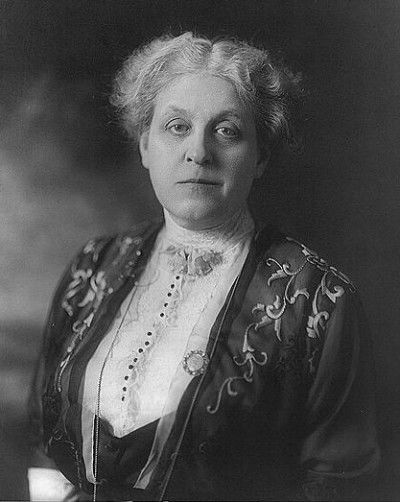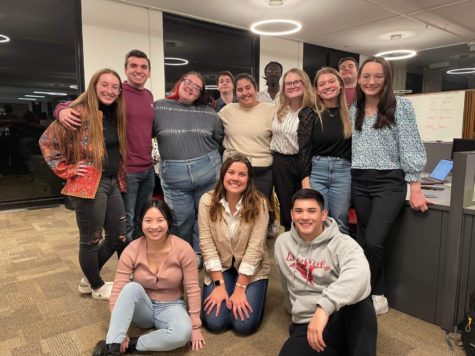Letter: From the woman who brought you the W.T. Hornaday Twitter thread

Letter writer Carleen Silva compares the W.T. Hornaday plaque event with the renaming of Catt Hall.
July 15, 2020
A few weeks ago, I wrote a Twitter thread that apparently made its way to Iowa State University’s administration and led to the removal of the W.T. Hornaday plaque outside of LeBaron Hall. It was a whirlwind of 72-ish hours. And while I agree with Iowa State’s actions of removing the plaque immediately, I can’t help but be confused by how quickly they acted.
Iowa State University’s administration has been telling students for a quarter of a century they can’t just act unilaterally on issues. There needs to be town halls, and committees and subcommittees, and task forces and campus climate surveys and then they’ll do nothing because everyone pushing for change has graduated already and whew that was a close one, almost had to follow through. But, there’s a process, OK? And that process takes anywhere from one to 25+ years. Trust the process!
It may seem to some that I’m being overdramatic. I’m really, really not. Ask anyone from the September 29th Movement about how Iowa State has been derailing the conversation to change the name of Catt Hall since 1995.
You might have already read about Catt in the Daily op-eds that have come out recently. But, just to recap: Carrie Chapman Catt — the namesake of Catt Hall — campaigned for women’s suffrage and argued that granting the vote to women would allow the South to uphold white supremacy through the sheer number of white women living in the South. Supporters of Catt say this violent rhetoric shouldn’t detract from her accomplishments. Iowa State has said her actions shouldn’t overshadow her greater legacy and contributions to “women’s” rights (even though we know not all women got the right to vote with the passage of the 19th Amendment).
Catt supporters will also espouse that she is a “product of her time” and therefore shouldn’t be judged by modern standards. Because, all the cool white supremacists were doing it, so really, you can’t judge her.
If you can’t tell, I think these arguments are garbage. But since Iowa State has been standing firmly behind these arguments for 25 years, I assumed they would apply them across the board.
Which was why I was more than a little surprised when Iowa State employed exactly zero of these justifications with W. T. Hornaday. President Wendy Wintersteen actually came out and said his actions were “indefensible.” There was no talk of his legacy despite the fact Hornaday is widely considered the father of modern-day wildlife conservation. And it wasn’t that long ago when Iowa State was singing his praises on an Iowa PBS segment “William T. Hornaday – Saver of Buffalo, National Zoo Founder” that aired in 2008.
His book “Our Vanishing Wildlife” was one of the first to call for wildlife preservations and is credited for paving the way in public consciousness for the passing of the Lacey Act. Which, for the nonconservationists in the audience, was the first federal law to protect wildlife and has since been amended to include plants and plant products protected by the Convention on International Trade in Endangered Species of Wild Fauna and Flora (CITES).
It could even be argued the importance “Our Vanishing Wildlife” placed on the protection of habitat via the creation of preservations was a precursor to the infamous inclusion of the term “critical habitat” in the Endangered Species Act. Former Iowa State professor, James Pritchard, even published a review of a biography of Hornaday in 2014 and said Hornaday’s “positions indelibly shaped legislation.” Hornaday is most well known for saving the American bison (Bison bison) from extinction through his work at the Smithsonian Institution’s Department of Living Animals, which would go on to become the National Zoological Park, where he was the first director.
Internal conflicts with the National Zoological Park would eventually cause Hornaday to leave his position and become director, general curator and curator of mammals of the then newly established Bronx Zoo. Are these not accomplishments? The man has a mountain peak in Yellowstone named after him, at the personal request of a U.S. president. What is a legacy if not that?
Iowa State notably refrained from arguing that Hornaday was “a product of his time” as they often do with Catt. However, Hornaday was far from the first person to put a human being in a zoo. Zoologists across the world adopted this sickening practice. Notable examples include Saartjie Baartman, a Namaqua woman, who was forcibly put on display in England and France until her death in 1815.
The Scottish National Exhibition in Edinburgh displayed a tribe of Senegalese natives for the summer of 1908. Hornaday didn’t come up with the idea of putting people in cages to be watched and ridiculed. C’mon people, he was just a product of his time. And it would be really unfair — nay — disingenuous, to judge him by the standards of today. Even though people of the time (see: clergyman James Gordon) fervently disagreed with Hornaday’s actions.
If Catt is a product of her time, then surely Hornaday must be a product of his time too? Especially considering they’re arguably a part of the same time in history. In 1917, Catt wrote chapter six in “Women’s Suffrage by Federal Constitutional Amendment” where she wrote, verbatim, “White supremacy will be strengthened, not weakened, by women’s suffrage.” There’s also a record of her advocating for white supremacy in the South as early as 1897 in a newspaper article in the Portage Daily Democrat (“They Might Vote,” Nov. 18, 1897). With 11 years separating Catt’s calls for white supremacy and Hornaday’s actions, why are they not judged by the same standards? Standards, again, Iowa State has been telling us are the cornerstones to understanding history.
People might argue the act of kidnapping a person and placing him in a zoo is leagues away from some quotes about white supremacy given by a white woman. I would argue it’s exactly the same thing.
A racist is a racist is a racist. White supremacy is inherently violent. Whether it be in New York or Tennessee — Minneapolis or Ferguson. It has always had very real and very dangerous repercussions for people of color, no matter if the year was 1906, 1917 or 2020. Violent rhetoric has always enabled violent action. White supremacy in the South was upheld through lynchings, hate crimes, sundown towns and the continued existence of the Ku Klux Klan. Catt’s words translated to violent actions against Black Americans. Both Hornaday and Catt should be judged and condemned by the same standards in the same ways.
So what makes Catt so untouchable? I have two theories.
Theory one is what I like to call the Jane Cox Effect. Cox is an Iowa State theater professor emeritus and former director of the theater program. Cox also happens to be Carrie Chapman Catt’s number one fan. She directed, produced and starred in a one woman show about her life, called “The Yellow Rose of Suffrage.” So, clearly an unbiased party here. When anyone dares to bring up the unabridged truth about Catt, Cox inserts herself to defend her as if it were her own name being dragged through the mud.
But this isn’t an article about Jane Cox. Not really. Just what she represents. And what she represents, in the context of Hornaday and Catt, is someone who is on Iowa State’s payroll with significant pull and power, who uses her position to silence those who disagree with her. There is no one in that role for Hornaday. Iowa State University was able to act with such swiftness because there wasn’t someone trying their hardest to defend a white supremacist at the cost of the whole truth being known.
Theory two is what every student at Iowa State knows best: money talks. Iowa State fundraised for the renovations for Old Botany while using Catt’s name back in the early ’90s. Around $1 million was raised for the renovation of Old Botany using Catt’s name. People have even argued Catt’s own donation of $100,000 to Iowa State is reason enough to keep the name. I also suspect Iowa State fears donors may stop giving money to the university if they changed the name. Correct me if I’m wrong, but if you go on record saying “there is no justification of racism and brutality–ever” I think “potentially losing money” falls in the category of “ever.”
Time and time again Iowa State has shown it doesn’t actually care about engaging in anti-racism or racial and social equity work. They’d rather put out hollow statements with no follow through and hold their breath for four years until students graduate out and forget about it because that is what’s best for the bottom line. Removing the Hornaday plaque was low-hanging fruit. Iowa State effectively said: you can have a little bit of tangible action, as a treat.
From Jischke, to Leath and now Wintersteen — we are tired of the same inaction. Committees weren’t the answer then and they aren’t the answer now. Now we all know the administration has the power to act, but chooses not to under a thinly veiled guise of remaining impartial and “trusting the process.”
Inaction has never been impartial. And that goes for every department head, every faculty member and every member of administration. Many departments not in the College of Liberal Arts and Sciences stayed out of the discussion during the height of the September 29th Movement. That should no longer be the case.
Confronting racism is the job of everyone, at every level and at every opportunity. It comes down to this: William T. Hornaday was a racist; Carrie Chapman Catt was a racist. Iowa State University, under no circumstances, should honor racists. No more double standards. Change the name of Catt Hall.
Carleen Silva is an Iowa State alumna.
















